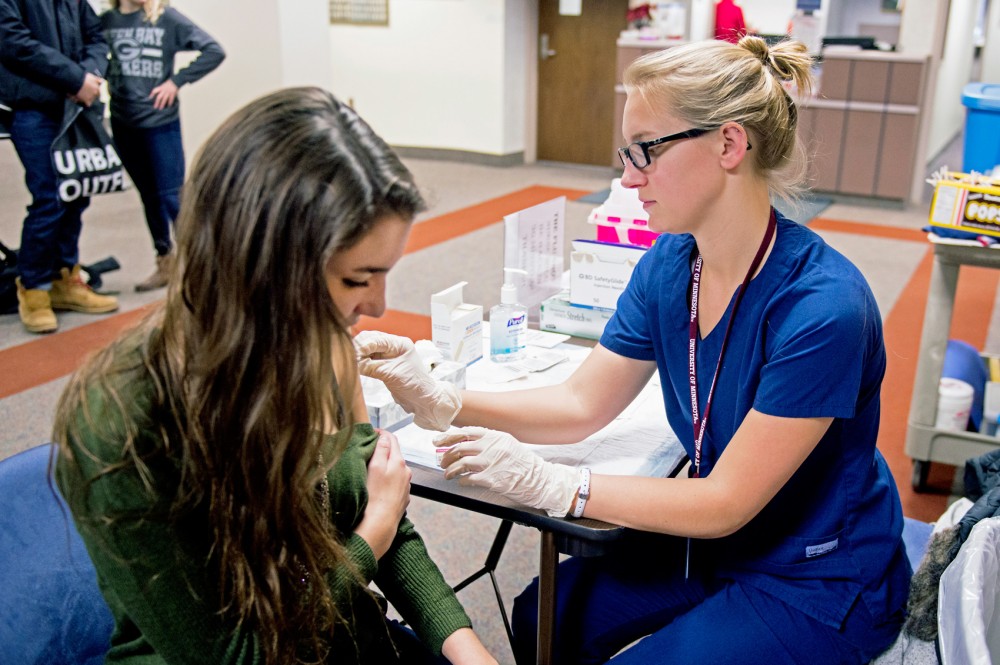The University of Minnesota has felt the impacts of an ongoing flu season that has hospitalized many nationwide.
Boynton Health has experienced high volumes of students coming in with the flu this season. Around 20,000 students, staff and faculty have also visited the campus clinic for flu vaccinations, said Dave Golden, director of public health at Boynton Health.
“They consider this year to be a severe flu season because… the severity of the particular bug that’s out there now is known for higher rates of mobility and mortality,” Golden said. “The numbers are pretty big in terms of how widely it has spread.”
Despite a large number of flu cases at Boynton, Golden said the University’s educated population has been proactive about vaccinations.
“Our student population typically reports just over a 60 percent vaccination rate when we do a survey of students. If they don’t get it here, they get it other places where vaccines are available,” he said.
Aside from vaccinations, Golden stressed the importance of good nutrition, hygiene and proper sleep to reduce susceptibility to the flu.
Around the state and nation, the flu has been more difficult to prevent due to the current strain infecting the population.
Melissa McMahon, a senior epidemiologist with the Minnesota Department of Health, said the flu typically cycles between the weaker H1N1 strain and the current H3N2 strain.
“[H3N2] tends to be harder to match in the vaccine, and the vaccine tends to be a little less effective,” McMahon said. “Whenever we have an H3 year, it has the potential to be a bad one — even with the vaccine, people may still become ill.”
The Minnesota Department of Health reports that nearly 4,700 people have been hospitalized with flu-like symptoms so far this season — the highest number in a decade.
“Since we started tracking things, this has been the worst season,” McMahon said.
Additionally, a report from the Centers for Disease Control and Prevention found that the current vaccine for H3N2 has only been 36 percent effective this season.
Michael Osterholm, director of the Center for Infectious Disease Research and Policy at the University of Minnesota, said while this flu season is bad, worse strains may be on the horizon.
“Seasonal flu is bad, but this is not that unusual,” Osterholm said. “When a totally new flu strain emerges in the human population, that’s when we really have a problem.”
Osterholm said there are typically three to four dangerously infectious pandemics per century.
“H3N2, the strain that has been severe [this season] — that was the pandemic strain from 1968 — year after year it comes back,” Osterholm said. “Pandemic influenza is going to continue. It’s one of those things that when it happens, whatever we have for tools, that’s it.”
In an op-ed published by The New York Times earlier this year, Osterholm argued for the need of a “universal” flu vaccine to accommodate the interconnected nature of modern society. The vaccine would target reoccurring parts of the virus as opposed to reacting to changes in different strains that emerge each year.
“If we had a universal vaccine, it would actually cover for seasonal flu as well as significantly reduce the likelihood of a pandemic,” Osterholm said.

















